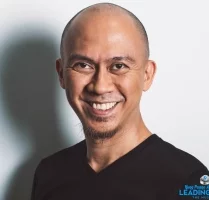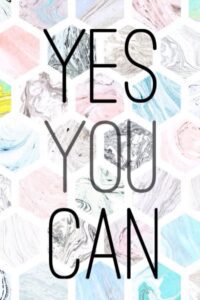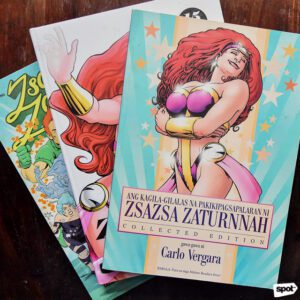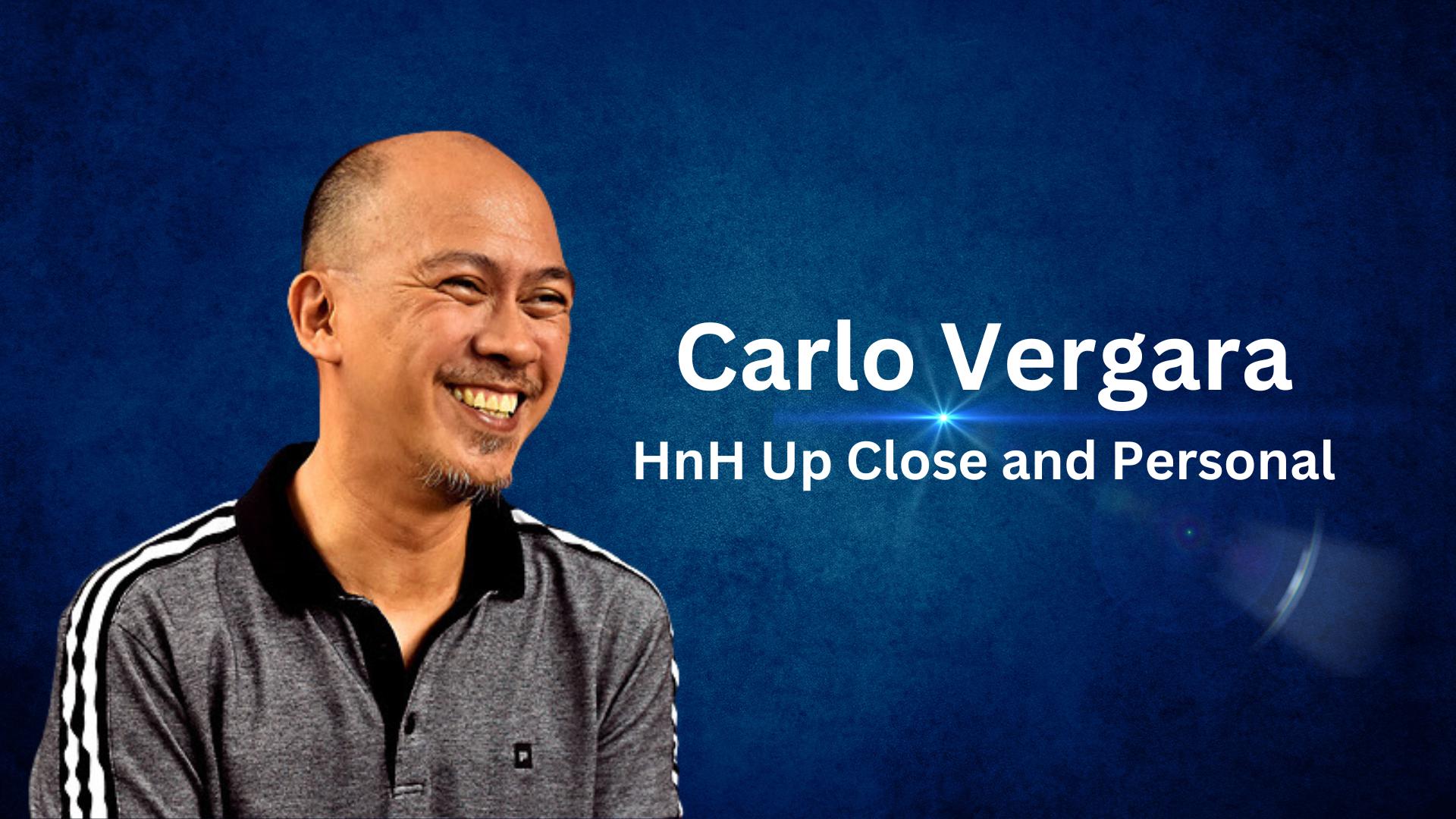I was privileged to be able to chat with author-illustrator Carlo Vergara, a finalist for the 41st National Book Awards.
Introduction


Carlo Visconde Vergara is a Gen-Xer born in 1971 who sees himself as an accomplished creative who is still struggling.
From making comics to being a graphic designer to being a stag actor to writing plays, writing screenplays, teaching, writing fiction, and illustrations … from an artistic standpoint, he has covered a LOT!
Despite experiencing some success, he realized that “despite the successes, this journey is really about the ups and downs.”
How did you decide to become a serious writer?

It’s only when people said that I could.
When it came to the drawing part, I knew from a very young age that I really wanted to draw. I was drawing as a kid. That was my schtick.
When I was in school, I got high marks for writing poems and essays. I didn’t have problems with writing or spelling. I had no difficulty with the technical side of things.
When I graduated from college, I applied as a copywriter at the PR office of De La Salle University. I submitted my articles for consideration with no formal training in writing articles, and I got in.
So I had that kind of foundation of the writing and the illustration. Now, it’s a matter of where I would take it. That was what I wasn’t really sure of.
I was part of the high school drama club. I just decided to go for acting because it fascinated me, though I’m a classic introvert. All the other stuff like the graph design, the screenwriting, the playwriting – those were things that. People said, hey, why don’t you try this? And that’s what I did.
I would liken myself to steam that just curves and adapts to the landscape.
It trained me to be flexible and highly adaptable, which are highly important in the job.
Writing style


I need to have an idea of where the conflict would happen. I have to have a story idea and some characters, the milieu. I need to answer two questions:
- Where will the conflict start?
- What is this exercise for?
Sometimes in life, things happen. You think about a theme or reality of life. Once I have a theme, I go down and try to find the conflict. This is when I love my speech-to-text tool. I open Microsoft Word, and I just blather. I would talk through everything in a messy brainstorming session.
Now that I have that structure in place, the plot is in place, I know how the characters talk, and it becomes easy to write the story. This is what I learned from Direk (Director) Chris Martinez. He said, “When you have the outline of your story done, most of your problems are done when it comes to the story.” Because all you have to do is fill in the dialogue. The dialogue is the fun part actually. That’s when you can start to play.
I take the advice to make your story a rollercoaster ride so seriously. I subscribe to the Pinoy way from films in the 70s. I want to make you feel everything in a genuine way.
Did you ever feel afraid?
The impostor syndrome came after. Whenever I create, I create from a place of innocence. When you’re not aware of the stakes, everything is free-flowing. You’re approaching the thing like a child. It’s like play. This is how I approached all my work in the early stages.


My artistic motto has been: Just try because you never know.
The great side: You meet really interesting, talented people who eventually become your friends.
The impostor syndrome happened to me after the success of ZsaZsa Zaturnnah because I had no formal training in what I did and people started to call me a genius. And then people said I had to do it again. That’s when it hit me – how do I tell these people that was a fluke?
In the past, before Zsa Zsa Zaturnnah became a hit, no one was hiring me for illustration jobs. It wasn’t until it became a success that many roads opened. I got hired for illustration jobs and more. People wanted to meet me and talk with me. People wanted to know if I had the secret sauce.
The Importance of Networks


I try to analyze this whole phenomenon of success. I came across this podcast where they interviewed Albert-László Barabási (physicist) who is a professor of network science in the US. He wrote a book about what it takes to be successful.
A lot of success happens in the network. Your skill is important, but if you don’t have access to the network that can actually facilitate the spread of your work, then you’re just a skilled person. Put your work out there and make your work visible. There are a lot of contests, social media, etc.
It’s creating the right material, posting at the right time, and having the right people see it and who will spread it. Success can happen with one work that goes viral. It can happen even if you aren’t a networking person.
Observe. Internalize. Apply.
Interacting with people can be a challenge when you’re an introvert. I remember I once told myself I had to learn this and I would observe the extroverts at my workplace. It was like training myself for a role.
It had to start with a conscious decision that I needed to do this if I wanted to engage better with people.
Becoming a comic book creator
I decided to get into making comics on my own in 2001. I had One Night in Purgatory which was my test project. It was a 56-page drama between 2 people, LGBT. I did the project just to test if I could do the writing and the drawing thing at the same time.
Because of my training in PR, I prepared press kits, went around Manila dropping them off to the newspaper companies, and got some of my press releases printed. I also got a positive review, which boosted my confidence.
ZsaZsa Zaturnah


Here’s the problem when you don’t have the training in creative writing: I just worked with my instincts. The practice of story creation I had before is a lot different from what I have now because I have trained myself in how to make stories. I have a bit more process when creating stories.
The representation of LGBT characters in Philippine media was very limited to specific kinds of roles. I figured at the time if a straight man could be a superhero and a straight woman could be a superhero, ergo a homosexual could be a superhero. That’s all I was thinking, not about representation at the time.
People often ask me, “Why does Ada transform into a superpower woman and not into a superpower homosexual?” In my mind, I didn’t know how many LGBTQ comics readers were out there. I knew the readers to be mostly heterosexual men. Therefore, I needed a way to get them in. That’s why Zaturnnah looks like that.
Other works
- Zsazsa Zaturnnah sa Kalakhang Maynila (Zsazsa Zaturnnah in Metro Manila)
- Kung Paano Ako Naging Leading Lady (How I Became Leading Lady)
Best Compliment
I created a survey with the question, “Why would you recommend my work to other people?” Best response: “His stories make you feel everything.”
Another reader said he likes the way I make the fantastic seem like a possible everyday thing. Because the fantastic is so tied into the human experience of the characters.
Some more nuggets of wisdom to share:
- Not everything that you make will soar. – That first taste of success, savor it but know it’s not gonna last. You’re only as good as your last work.
- You won’t experience success all the time.
- You’ll never know when the break will happen – if it will happen.
- A lot of success is about luck. Skill is important, but there’s a big element of luck.





